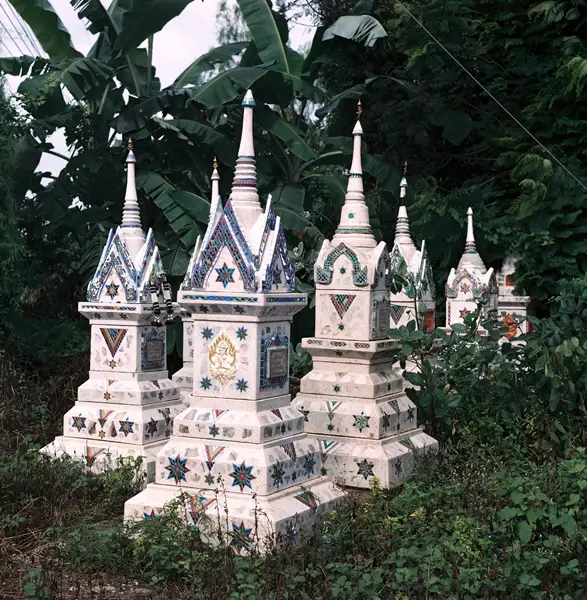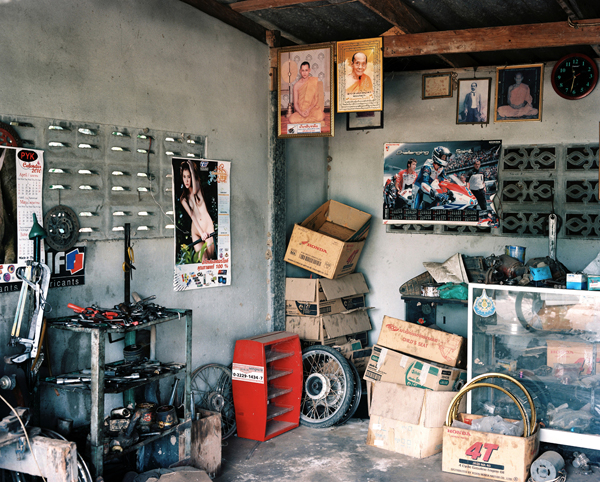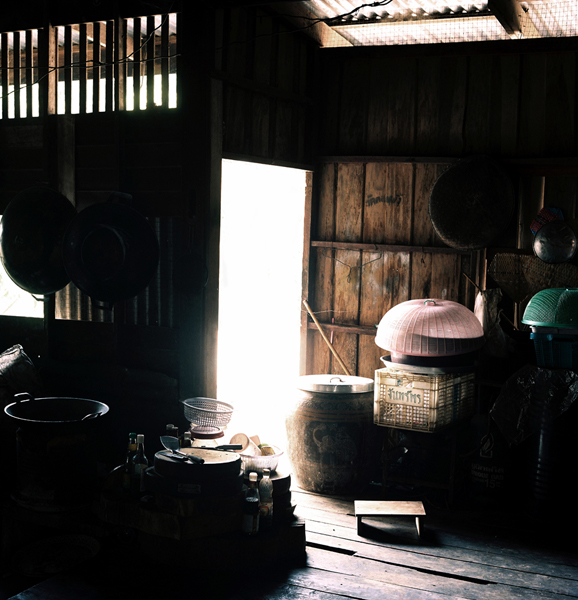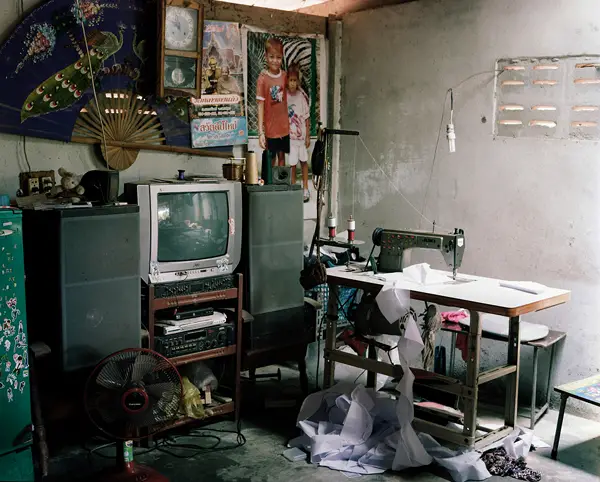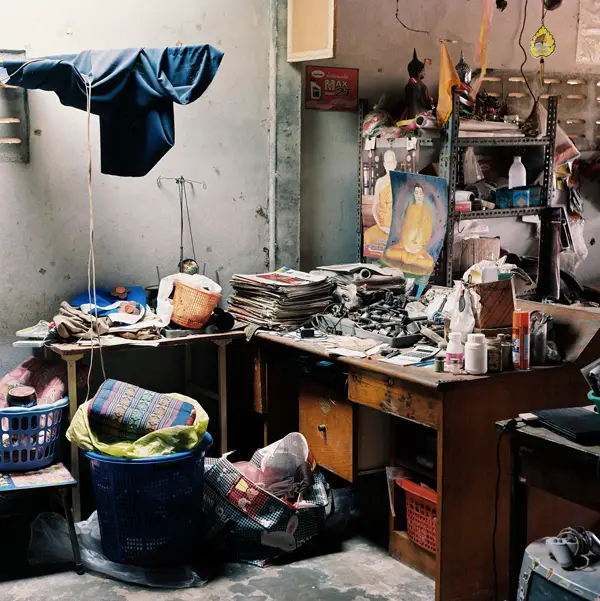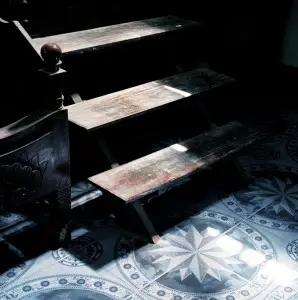 These days are quite an exciting time for photography within the arts in Thailand. There are galleries devoted to contemporary photography such as Kathmandu Gallery, run by Manit Sriwanichpoom, then we have H Gallery, FTT Gallery and the Ardell Galleries that regularly show contemporary photography as part of their program. There is also more and more photography being exhibited at the Bangkok Arts and Culture Centre (BACC) in downtown Bangkok.
These days are quite an exciting time for photography within the arts in Thailand. There are galleries devoted to contemporary photography such as Kathmandu Gallery, run by Manit Sriwanichpoom, then we have H Gallery, FTT Gallery and the Ardell Galleries that regularly show contemporary photography as part of their program. There is also more and more photography being exhibited at the Bangkok Arts and Culture Centre (BACC) in downtown Bangkok.
On top of this, there are professors and lecturers such as Ohm Phanphiroj at Bangkok Univesity and Chardchakaj Waikawee at Stamford International University, who are teaching a contemporary and academic understanding of photography within the visual arts. There is also the monthly publication Bangkok Art Map (BAT) produced by Steve Petifour that is a great promotional asset for not just photography, but all the arts in Bangkok.
All this suggests that photography is now firmly situated and accepted within the arts in Thailand. However, as it’s true of any country in the world, the art scene tends to be dominated by an elite, and this is especially true here in Thailand, where all too often exhibitions are by internationally educated Thais from rich families. There is still the voice of the ‘common’ people to be heard! Having said this, the move by certain universities to provide a more theoretical and critical approach to their photographic educational programs, and with galleries willing to exhibit such work, things seem to be moving in the right direction.
After all, photography, with its unique relationship to reality, is probably the most critical of the artistic mediums, and with the current social and political climate within the country, it should be used as such!
Like many travellers, Ian Mackown discovered photography while abroad. When Ian came to Thailand for a holiday in 1992, a friend gave him a camera and he spent most of his holiday taking photographs. It was all the ‘usual’ kind: temples, blue seas, sunsets, cute-looking children, hill tribe people and tuk-tuks. Upon his return back home to the United Kingdom, Ian continued his interest in photography by doing an A-level in the subject at the local college. But, over the next couple of years, he became more and more disillusioned with the country and his life there so he decided to come back to Thailand to do a photography project.
He had been in touch with the Duang Prateep Foundation – a non-government organisation operating in the Khlong Toey slum in Bangkok – and they offered Ian a small commission and a place to stay. “This was my first ‘real’ experience of Bangkok, both personally and photographically; and I have to admit that I found it very difficult indeed,” confesses Ian. “I found myself suddenly living in the slum, and trying to take photographs. I am not saying that it was hard to take photographs. After all, poverty provides a very ‘photogenic’ subject, but it was precisely this point that I struggled with; I didn’t enjoy the act of photographing social misery.”
Ian also visited AIDS hospitals and drug rehab centres, but again he didn’t enjoy the role of so called ‘socially concerned’ photography. He did however complete a body of work and the United Nations Drug Control Program (UNDCP) used some of his photographs. “I realised that I was just taking photographs of the same subject matter, and more or less in the same style as many people had done before me,” Ian said. When it became time to return to the UK, he no longer wanted to pursue photography in the way he had previously thought, so he decided to stay here in Thailand and began to teach English.
Once a resident, Ian started taking photographs in temples outside of Bangkok (mainly Singburi and Chainat): “I had visited quite a few of them, and found them interesting and totally different to the temples in Bangkok. I wanted to move beyond the ‘tourist gaze’, and I did not want to repeat the stereotypical holiday-brochure/travel magazine representations of the subject: monumental Buddha statues, saffron-robed monks and golden temples.”
In his photography, Ian focused on the more prosaic and commonplace subject matter that he was seeing in temples, such as the marginal details and the traces of human activity, the fundamental belief in animism, the acceptance of past life and next life, and the veneration of spirits and ghosts. He wanted his work to reflect a more spiritual, colourful and relaxed cultural attitude, and an acceptance of the inevitability of the cycle of life and death that does not exist in our material-driven Western societies.
With the Thai experience under his belt, in 2005, Ian Mackown returned to England to do a masters degree in photography. He become interested in how issues can be addressed outside the traditions of documentary / photojournalism, but his interest still lies within the image language of documentary photography. “I am also concerned with something that we cannot visibly see – the space between the images. My work is not about single images, it is about how they work together as a whole body of work. My aim is to produce works in which meaning is more elliptical and allusive than ‘representation’ in its traditional sense,” he admitted.
There are also many other foreign photographers producing work in Thailand. For example, Nick Nostitz, Dave Stramboulis and Olivier Pinfat, who have over the years produced great bodies of work that certainly set the level.
Ian Mackown is not a professional photographer, as the term suggests, but someone who is paid to take photographs everyday and has demands and deadlines to meet. On the contrary, Ian makes a living teaching English and his photographic practice takes place during his free time. “I think there’s a distinction between an artists’ photographs and a photographers’ photographs. I think the objectives are different, the reasons for using the medium in the first place are different and the results are different. If you tell somebody that you are a photographer, they often respond by telling you that they have seen something that would make a good picture. This confirms their preconceived ideas of what makes a good photograph and when you show them something different, they often think that they could quite easily take that picture, or it’s not beautiful,” said Ian.
Some contemporary British documentary photographers that have influenced Ian’s work are Dinu Li, Paul Seawright, Tessa Bunney, Mark Powers and John Darwell. Based on his experience and artistic flair, Ian now approaches different projects with different styles and different aesthetics. “I believe that photography, and indeed any art in contemporary visual culture, should not only engage on an aesthetic level, but should also provide a philosophical, theoretical and critical discourse,” he concluded.
Photographs provided by Ian Mackown. Visit his work on his website. For news, exhibitions, upcoming events and art listings we recommend Rama9Art.
Originally published in “Bangkok Trader” (Vol. 5, No.12, November 2011)
